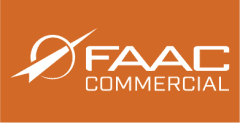Integrated Fire Truck Simulators Increase Effectiveness and Safety
Published

Mistakes happen. This is especially the case when it comes to a high-stakes, high-stress situation—one where every second counts—like responding to a fire or other critical incident.
“At just about every fire or training event you look at, you’ll see mistakes take place,” notes Phil Duczyminski, a fire department training officer for the City of Novi, Michigan. “They might be big mistakes, or might be small mistakes, all of which can snowball into something more catastrophic.”
Training gaps over ideal conditions for mistakes to flourish. For example, firefighters faithfully drill how to clear an intersection on the way to a scene, how to lay hose, how to operate the pump. But what about those vital transitions, when you are exiting the vehicle to get to the pump panel, or pulling hose as a second truck arrives to support you?
Calmly strolling “up to a pump panel and begin pulling levers and discharging water,” Duczyminski adds, “that’s not really realistic to any type of scenario you’ll be in.”
It’s a delicate dance—and you don’t practice a complex dance routine by learning single steps in isolation, by yourself.
Tying Together Training Increases Safety and Effectiveness
In part, tying together all the training disciplines is about simple coordination. It’s not much different from learning to play a song on the piano: You can learn the chord changes, then practice the melody—maybe working on a measure or two at a time for the tricky parts—and then memorize the lyrics. But that’s not playing the song. Sooner or later, you’re going to have to play it all the way through, chords and melody at the same time, while singing.
Similarly, a good fire truck simulator solution needs to go beyond isolated skills. It’s fine to practice driving, pump operations, critical incident management, and emergency medical response situations in isolation—but we all know that doing so isn’t reflective of what must happen in the field to protect life. Eventually, you need to tie it all together into one continuous process, see how you perform, and then analyze where you can improve.
This is part of the reason that Duczyminski is so enthusiastic about integrated fire truck simulator solutions like FAAC’s Continuum of Training. “With the Continuum of Training, a lot of the training ties together: driving to the scene, managing the scene, getting the pumps started. You don’t have to break the training up in a way that isn’t real.”
As a result, you don’t leave those gaps and blind spots—the places where time-consuming (even deadly) errors are most likely to worm their way in.

